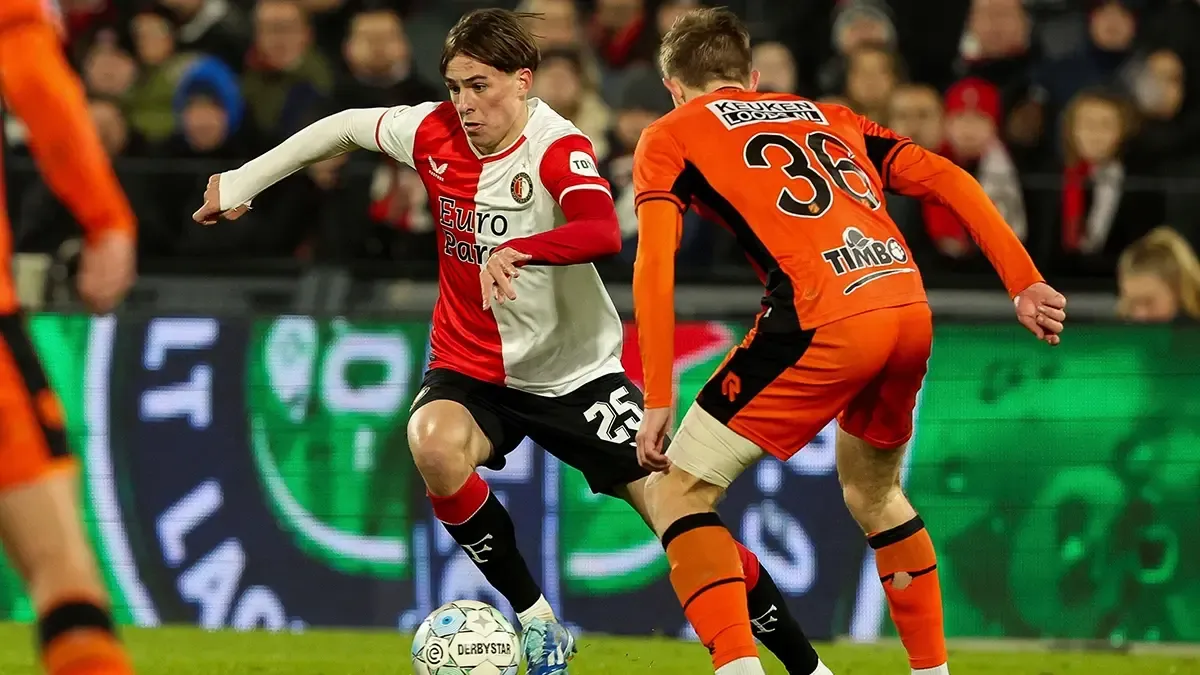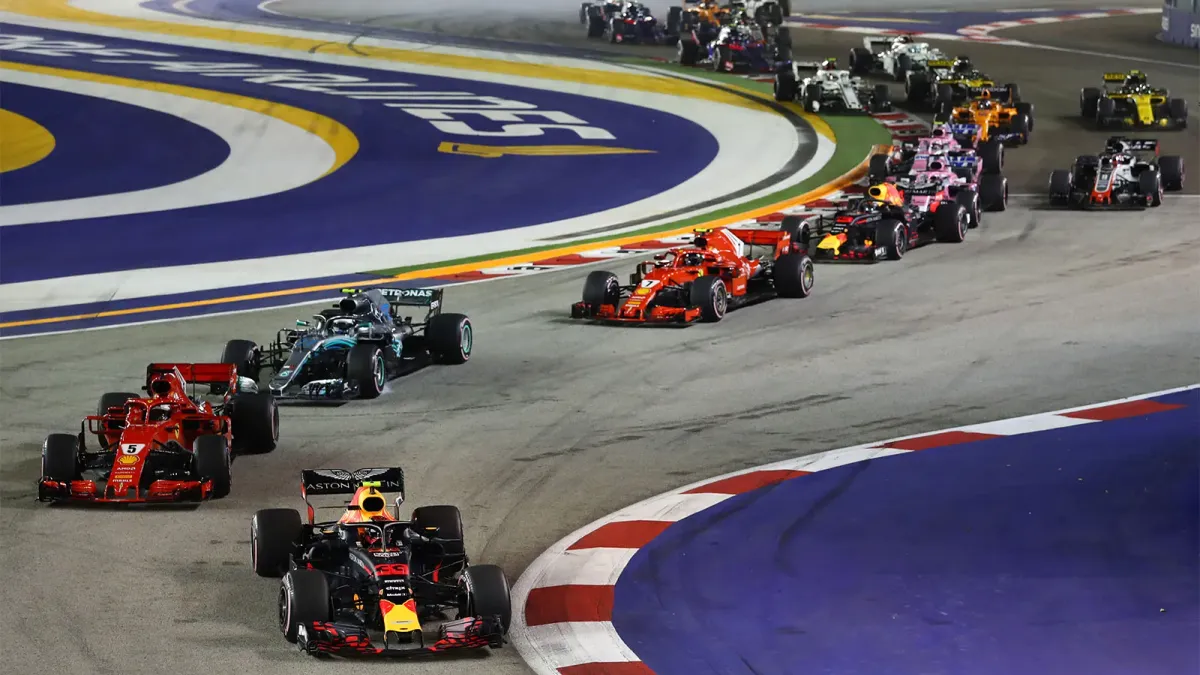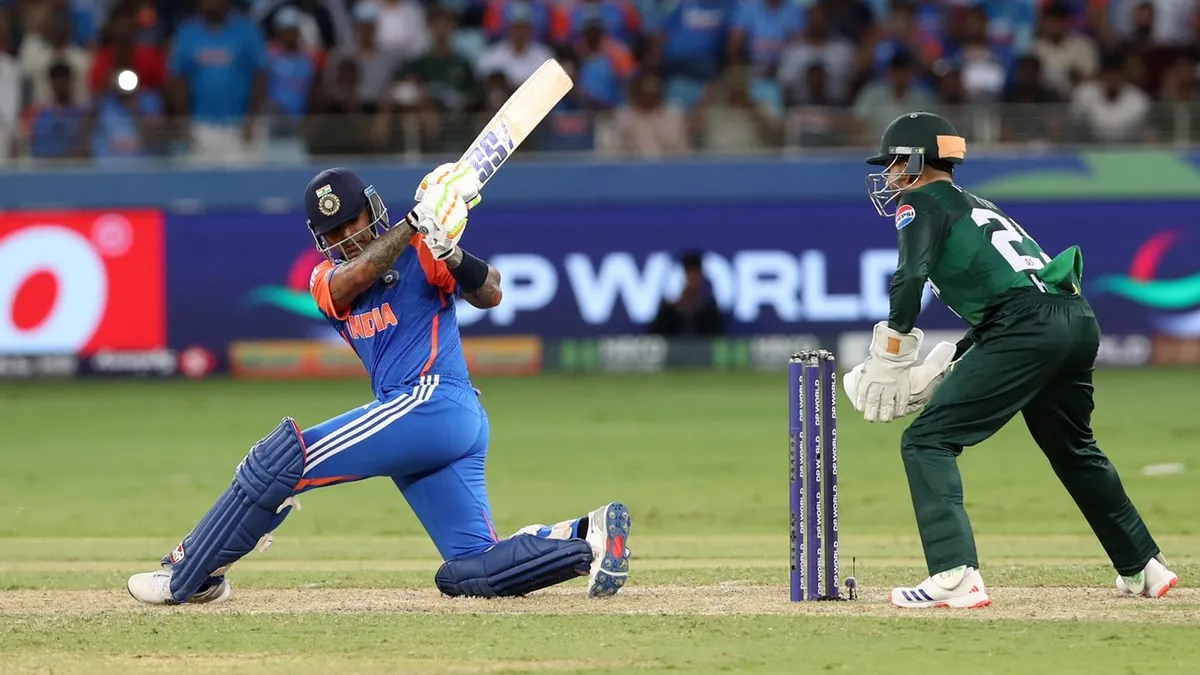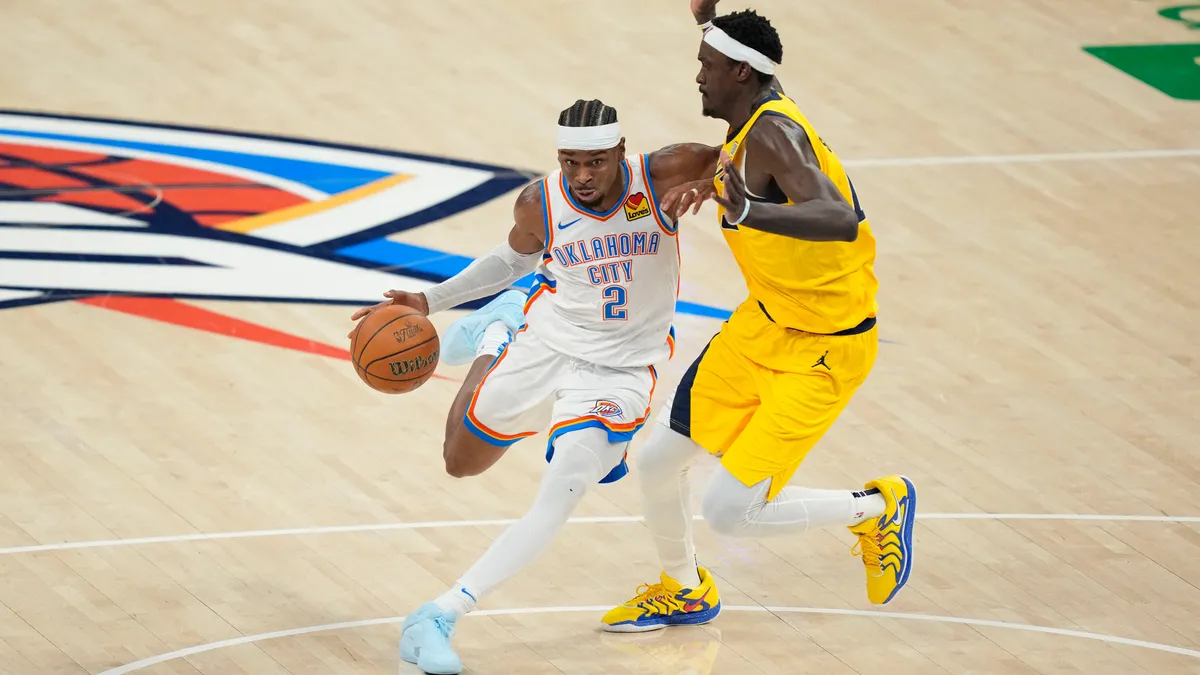
How Sport Builds Economies and Inspires Global Investment
By Anisha Lyall
Oct 17 2025, 9 min read
Sport has become one of the world’s most dynamic economic forces, shaping global trade, investment, and innovation. It connects businesses, governments and audiences across continents, driving activity far beyond the pitch or arena. Each event fuels industries such as media, technology, fashion and travel, creating millions of jobs and generating billions in revenue.
The rise of sports partnerships and advertising has transformed how brands engage consumers, turning passion into measurable economic value. As nations invest in infrastructure and hosting rights, the influence of sport continues to expand, strengthening global economies, supporting communities and inspiring new markets to grow through the power of competition.
Sports as a Global Economic Engine
Sports play a central role in the global economy, generating over $700 billion annually, around 1% of global GDP, according to the World Bank. This includes revenues from sponsorships, tourism, broadcasting rights and merchandise.
Key Economic Drivers in Sport
- Job creation: From athletes and coaches to stadium staff and digital marketers, sports employ millions worldwide.
- Advertising and sponsorship: Brands invest heavily in sports partnerships for global visibility.
- Tourism and events: Major tournaments attract international visitors, boosting local economies.
- Infrastructure investment: Stadiums, transport systems and hospitality sectors all benefit.
- Global trade and GDP growth: Sports stimulate imports and exports through merchandise, equipment and media rights.
Football The World’s Biggest Economic Player

Football is the most popular sport, influencing economies on every continent. It is a global industry powered by passion and business, with tournaments, leagues and governing bodies like FIFA driving billions in economic activity each year.
Major tournaments like the FIFA World Cup amplify this impact on a global scale, generating billions in sponsorships, media rights and tourism. Leagues such as the Premier League, La Liga and Serie A continue to drive this growth. These competitions attract massive broadcasting revenue, international sponsorships and tourism, making football the beating heart of the global sports economy.
Economic Impact
- Jobs created: Around 10,000 (direct and indirect) annually.
- Local economy boost: Approximately $3.4 million per season.
- Infrastructure investment: Over $2.8 million annually on stadiums and facilities.
- Tourism revenue: Visiting fans generate $15 million per year.
- Community projects: Contribute around $4 million to local initiatives.
Audience and Advertising Reach
- Global reach: Over 3.5 billion fans.
- Viewership: 70% male, 30% female, with female viewership growing by 15% year-on-year.
- Prime demographic: Ages 18-34, tech-savvy and urban.
- Advertising potential: Football sponsorships account for 40% of total global sports advertising spend.
Formula 1 Driving Economic Acceleration

Formula 1 is a global spectacle that merges sport with technology, luxury and travel. Each race attracts international audiences, major sponsors and high-value tourism, creating significant economic impact in every host city. The championship’s global calendar drives billions in revenue through broadcasting, sponsorships and partnerships with premium brands.
Events like the Monaco Grand Prix and Abu Dhabi Grand Prix stimulate travel, luxury spending and corporate sponsorship. The sport’s blend of innovation and glamour attracts brands across automotive, finance and fashion sectors.
Economic Contributions
- Annual global impact: Over $2.5 billion.
- Employment: Thousands across logistics, engineering, hospitality and media.
- Event tourism: Each Grand Prix adds $150-$200 million to the local economy.
- Infrastructure investment: High-value urban projects in host cities like Singapore and Abu Dhabi.
Audience and Sponsorship Value
- Viewership: Over 1.5 billion global TV viewers annually.
- Fan demographics: Affluent professionals, aged 25-44, with high brand loyalty.
- Brand exposure: Global races deliver 300+ hours of TV coverage per season.
- Top sponsors: Rolex, DHL, Emirates and Heineken leverage sports advertising for global engagement.
Cricket Strengthening Economies Across Continents

Cricket generates billions through domestic leagues, international tournaments and global fan engagement. It is a cornerstone of the sporting economy across Asia, the UK and Australia, driving employment, tourism and media revenue.
Major events like Cricket World Cup, Indian Premier League (IPL) and T20 World Cup attract huge audiences and brand investments, while national boards and sponsors benefit from long-term commercial partnerships. From merchandise to broadcasting, cricket continues to strengthen trade and advertising links across continents, making it one of the most valuable global sports markets.
Key Economic Impact
- Indian Premier League (IPL): Valued above $10 billion, adding $500 million annually to India’s GDP.
- Cricket World Cup 2024: Generated $1.6 billion in revenue.
- Employment: Tens of thousands hired during tournament seasons.
- Tourism growth: Match-hosting nations see 30% increases in hotel occupancy.
- Export growth: Boosts trade in sports gear, media rights and digital content.
Audience and Brand Benefits
- Fan base: Over 2.5 billion across Asia, UK,and Australia.
- Demographics: 60% male, 40% female, with strong middle-income engagement.
- Sponsorships: Pepsi, Dream11 and Tata leverage cricket for large-scale sports partnerships.
Golf Boosting Luxury Tourism and High-Value Partnerships

Golf’s influence stretches from tourism to luxury branding, making it one of the most profitable sports in per-event revenue. Its global tournaments attract high-value sponsors, affluent audiences and premium travel investment.
Events such as The Masters Tournament, PGA Championship and US Open contribute hundreds of millions in local and international revenue each year, driving tourism, sponsorship and global media exposure. These prestigious tournaments connect brands with elite audiences and reinforce golf’s reputation as a sport that blends tradition, excellence, and economic power.
Economic Contributions
- Global golf industry value: Estimated at $84 billion annually.
- Employment: Over 2 million jobs across hospitality, maintenance and media.
- Tourism revenue: Golf holidays generate $20 billion globally.
- Event economy: Majors like The Masters and The Open generate over $150 million for host regions.
Audience and Sponsorship Reach
- Fan profile: High-income professionals, 35+, with strong purchasing power.
- Advertising sectors: Banking, automotive, real estate and luxury goods.
- Top partnerships: Rolex, Mercedes-Benz and HSBC dominate golf sponsorships.
- Media reach: Global broadcast to 500 million viewers annually.
Basketball A Global Market for Youth and Urban Brands

Basketball is one of the fastest-growing sports worldwide, with commercial success spanning the NBA, EuroLeague and CBA. It drives sponsorship, tourism, and merchandise revenue while connecting global youth and urban audiences. The sport’s fast pace and global appeal attract global advertisers and lifestyle brands targeting younger demographics. Basketball’s major leagues generate billions in media rights, sponsorships and global merchandise sales, strengthening its influence as a modern sports marketing powerhouse.
Economic Highlights
- Global industry value: Over $90 billion, driven by broadcast rights and merchandising.
- NBA’s annual revenue: Surpasses $10 billion.
- Job creation: Thousands in event production, sports media, and retail.
- Tourism and local impact: Major events like the NBA Finals inject $100–$150 million into host cities.
Audience and Sponsorship Insights
- Demographics: 55% male, 45% female; one of the most gender-balanced global audiences.
- Fan age: 16-34 core group; highly active on social media.
- Advertising potential: High engagement for fashion, tech and lifestyle brands.
- Top sponsors: Nike, Gatorade and State Farm benefit from global visibility.
Tourism and International Relations
Sporting events strengthen tourism and global relationships. The Olympics alone generate over $5 billion for host nations. Fans travel, spend and engage, supporting airlines, hotels and restaurants.
Key Economic and Tourism Statistics
- FIFA World Cup 2022 (Qatar): Generated $17 billion in economic impact and welcomed over 1.5 million international visitors.
- Tokyo 2020 Olympics: Attracted more than 15 million domestic tourists and contributed $20 billion to Japan’s GDP through infrastructure and broadcasting.
- UEFA EURO 2024 (Germany): Expected to inject €2.5 billion into the European economy.
- Average tourist spend: Sports fans spend up to 30% more than leisure travellers during major events.
- Hospitality growth: Global hotel occupancy rises by 25-40% in host cities during top tournaments.
- Employment: Mega-events can create 30,000-100,000 temporary jobs, supporting local economies.
Sports tourism is now one of the fastest-growing travel sectors, worth over $600 billion annually, with consistent year-on-year growth.
Advertising and Brand Growth
Sports advertising links passion with profit. Sponsorships in sports deliver unmatched global exposure, helping brands build trust and loyalty through shared emotion and cultural connection. Associating with sport allows brands to reach engaged audiences, enhance credibility and align with values such as excellence, teamwork and ambition.
The scale of sports partnerships continues to grow, with global sports sponsorship spending exceeding $100 billion annually. Modern campaigns now blend on-pitch branding with digital activations, influencer content, and community-driven initiatives, ensuring visibility both online and offline.
Examples of Impactful Sports Partnerships
- Emirates sponsoring major football clubs and Formula 1 teams.
- Pepsi and Coca-Cola leading long-term cricket sponsorships.
- Rolex and Tag Heuer dominating luxury partnerships in motorsport.
- HSBC and Mercedes-Benz leading premium collaborations in golf.
- Nike, Gatorade and State Farm driving dynamic basketball advertising.
Strong sports partnerships transform audiences into loyal customers. Brands that invest strategically in sport gain sustained exposure, cross-border recognition and the chance to become part of global sporting moments that unite fans across cultures.
Driving GDP and Community Development
Sports have ripple effects across economies. Infrastructure projects increase employment, while merchandise and media rights contribute directly to GDP. Community projects enhance health, education and social inclusion, creating long-term value beyond the competition.
- Average GDP contribution from sports: 1.5–3% in developed nations
- Social investment: Billions reinvested into youth academies and local facilities
Sport also stimulates small business growth, from local suppliers and event vendors to hospitality and retail sectors. Government and private partnerships in sport often drive urban renewal, promote healthier lifestyles and create opportunities for young people through education and employment initiatives. The result is a sustainable ecosystem where sport powers both economic progress and community development.
Take Your Brand into the Game
Sports are a powerful force for economic and brand growth. Partnering with teams, events or ambassadors can elevate your visibility and connect you with millions of passionate fans across the world.
At World Sports Advertising, we bring brands into the heart of sport. Our team connects businesses with the right sporting platforms, helping you turn fan passion into brand performance. Whether your goal is to raise awareness, build loyalty or drive sales, we deliver partnership strategies that make a measurable difference. Contact us today and let us help your brand stand out in the world’s most passionate arenas.
FAQs
How do sports contribute to the economy?
Sports generate revenue through jobs, tourism, sponsorships and broadcasting, directly contributing to GDP and local development.
Which sports have the highest economic impact?
Football, Formula 1 and cricket lead globally, attracting major sponsorship and tourism spending.
How does sports advertising support brands?
It builds awareness, trust and engagement by connecting brands with large, passionate audiences.
What is the role of sports in international trade?
Sports drive cross-border commerce in merchandise, broadcasting and tourism, enhancing international relations.
